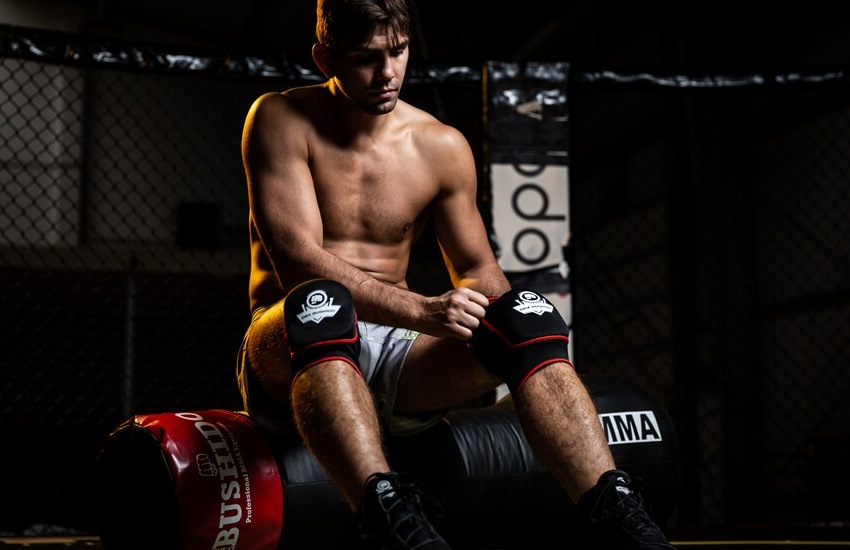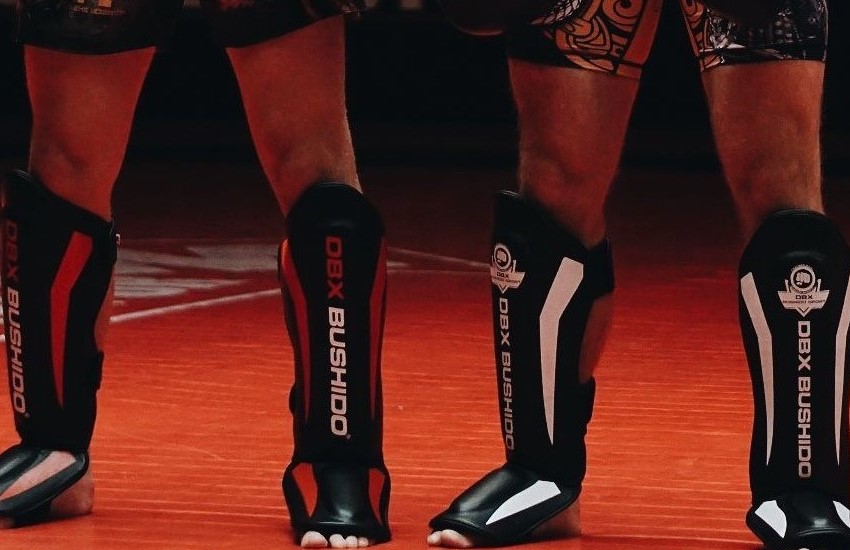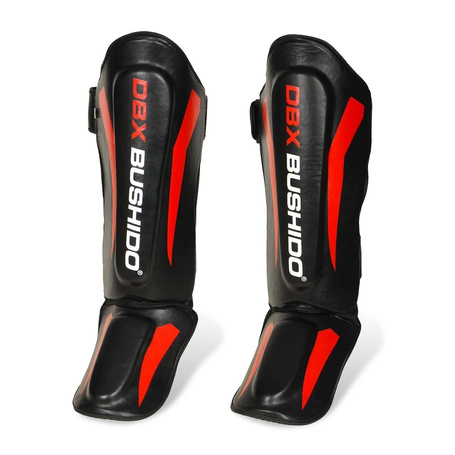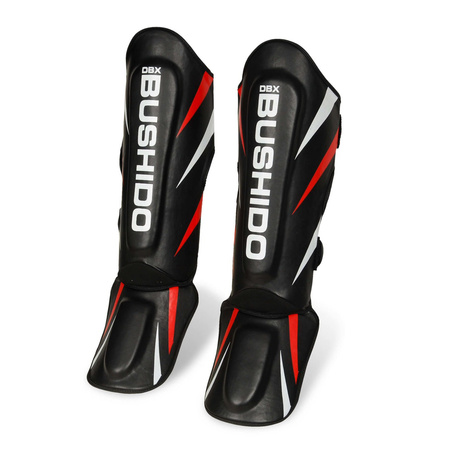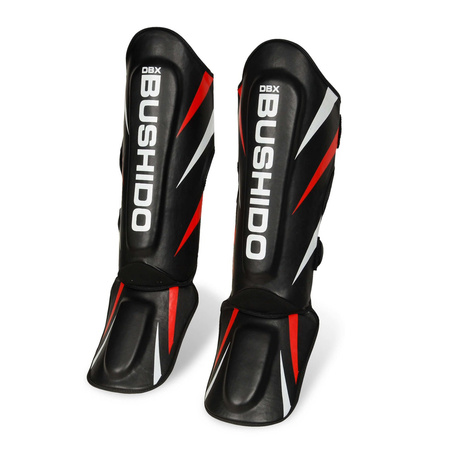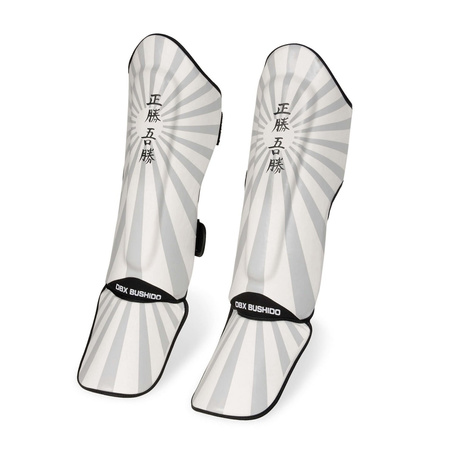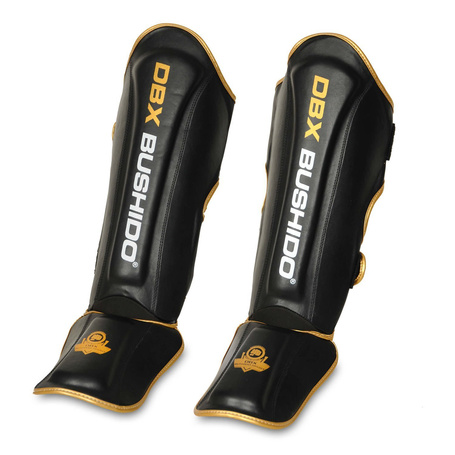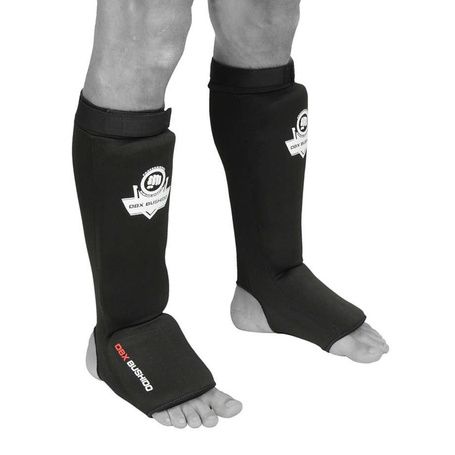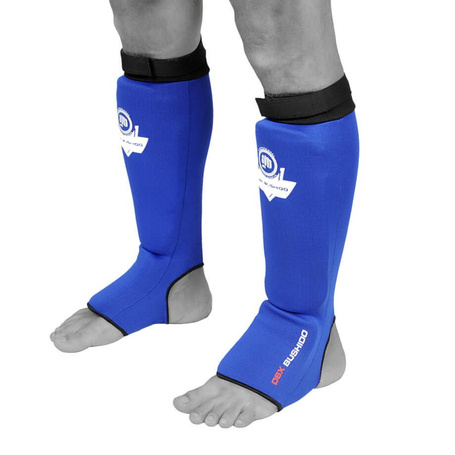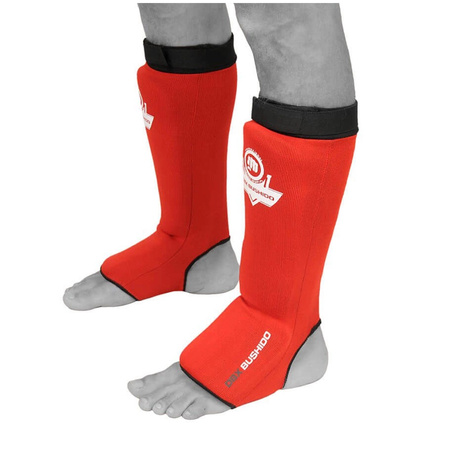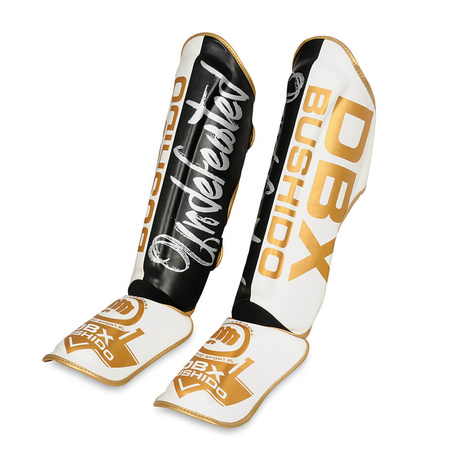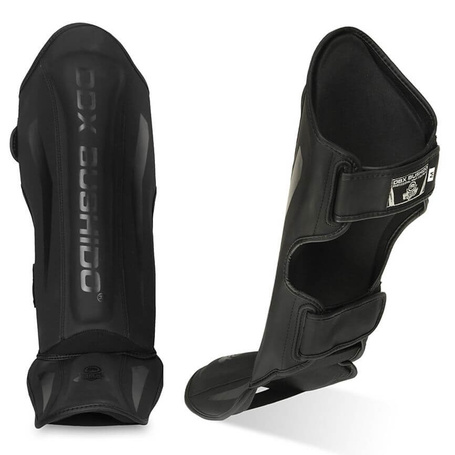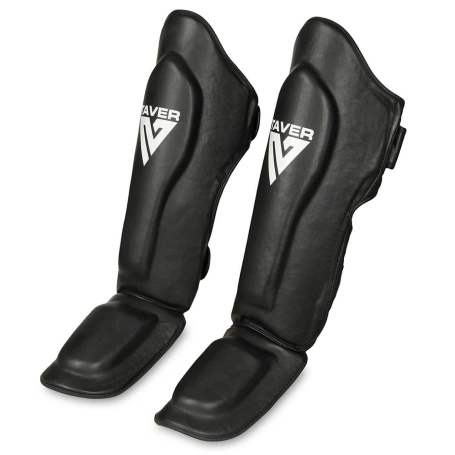Tibia protectors - Nagolenniki - Which protectors to choose for combat sports?
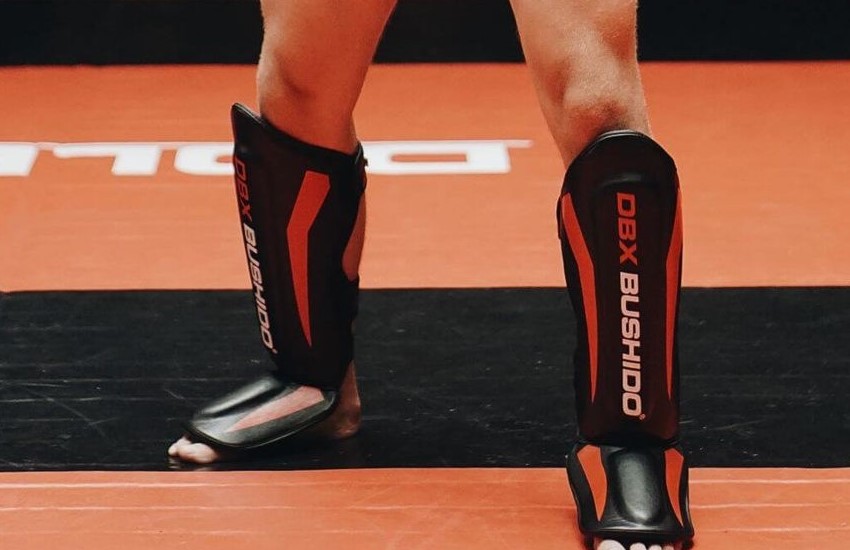
Today we're going to talk about tibia protectors. I'll tell you which are better to choose to start your adventure with combat sports. Whether the flexible ones or those with a rigid foam casting.
Flexible protectors
The first, most popular model of protectors primarily chosen by beginners is the flexible protectors. These are polyester plastic protectors with additional cushioning foam in the shin area and in the dorsal area of the foot. So, in fact, by choosing this model of protector you are ensuring the protection of both your shin and foot.
Why this model is chosen by beginners? Because in the initial phases of training you will be primarily focused on perfecting techniques, these will not yet be workouts where you will be hitting full force, so cushioning the force of impact is not a priority for you.
The priority for you is that the protector should be lightweight, comfortable, well adapted to the shape of your foot and shin.
First of all, that it should not cost too much, because you do not really know at the beginning how much you will engage in combat sports. You don't know how long you'll want to train.
So I think there is no need to buy expensive models at the beginning of your journey. I think that such a flexible protector will do the job completely.
This type of protector is also great for ground training, for the reason that in the case of protectors with a rigid cast - they cause more discomfort in the case of ground training. On the other hand, the aforementioned protectors are very flexible, adapt to the shape of the body, and are actually hardly noticeable during training. So, in the case of ground training, they will certainly be more comfortable than protectors with a rigid foam casting.
In summary, for whom will be good protectors of this type? First of all, for beginners who do not yet train with full impact force and want to protect their shin and foot from abrasion and damage at this stage. Also for people who train ground techniques, which are oriented to frequent descending to the ground position.
Protectors with foam casting
Another type of protectors are foam cast protectors. This foam casting is found in both the shin zone and the foot protection zone. These types of protectors provide a very high level of cushioning and protection. They are stiff, they don't adapt to the shape of your leg as much, so they may be a little less comfortable during ground training, but in the case of stand-up training, kickboxing training or Muay Thai, where these kicks are a lot and often painful, definitely this type of protectors will be the best solution, providing the most protection for you and your partner.
Of course, this type of protectors will be more expensive than the previously mentioned flexible protectors, because their design is more complex and the materials used are more expensive to produce, so this type of protector can be 3-4 times more expensive than flexible protectors. Therefore, they are often chosen at a later stage of training, when we know that we want to train combat sports.
When we are at the sparring stage, it is a good idea to equip ourselves with these types of protectors during training. Unless you are training stand-up styles such as kick boxing or Muay Thai, there will be a lot of kicks, often strong kicks, in which case it is a good idea to choose this type of protector from the very beginning.
It's not just about protection when dealing with kicks, but also when blocking them, so it's about keeping both parties safe.
Whichever type of pads you choose, whether foam pads or those with rigid foam casting, make sure the pads meet European safety standards. This is very important because this standard ensures that the protector adequately absorbs the force of impact. In order to obtain such a standard, it is necessary to do a series of tests under laboratory conditions, where each zone of the protector is checked, the strength of energy absorption is measured, and only then can protectors that meet such standards be marked with such a label.
How to check it? The protector should have a CE mark or possibly a label that will inform that the protector meets the European safety standard and which standard it is.
If you choose a protector that meets such a standard, you can be sure that it will provide you with adequate safety protection from impacts, but it will also provide you with adequate stability during training, as this standard also checks that the attachment system is stable enough so that the protector does not rotate or move during training.
It is in your best interest to choose protectors that meet these types of standards. Some vendors may want to keep quiet about the fact that the protector being sold does not have the safety standards in question, but this is important enough to keep in mind.
What to choose?
If you choose DBX Bushido protectors, you can be sure that all of our protectors that we have in our offer meet these safety standards. On the other hand, if you will be buying elsewhere, remember the CE marking.
Of course, in addition to the two models I present to you today, there are different variations. There are protectors that are stripped of some of the foot protection, and there are some that only provide protection for the foot called "kickers." However, the main purpose of this article was to show you the difference between flexible protectors and protectors with a rigid foam casting.

